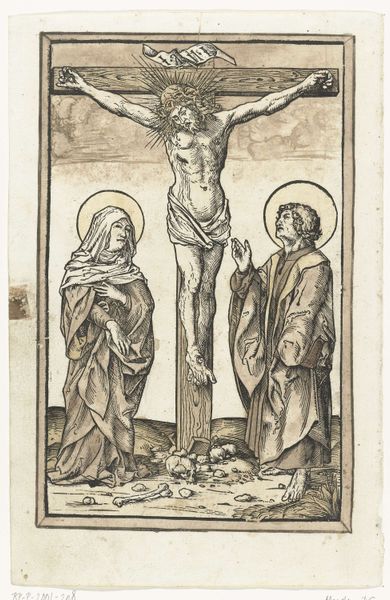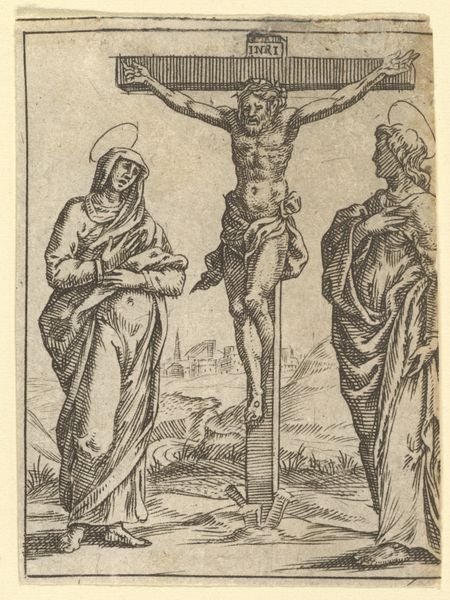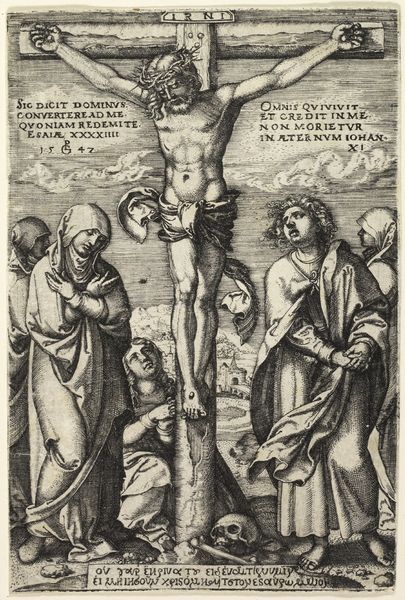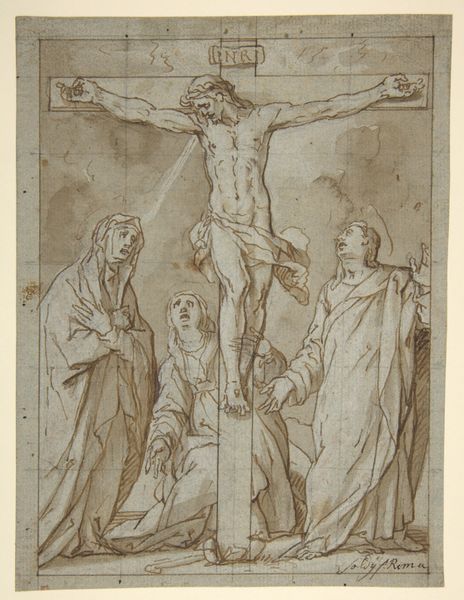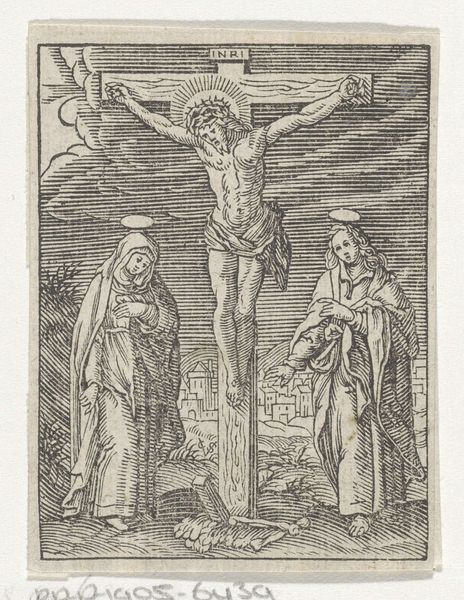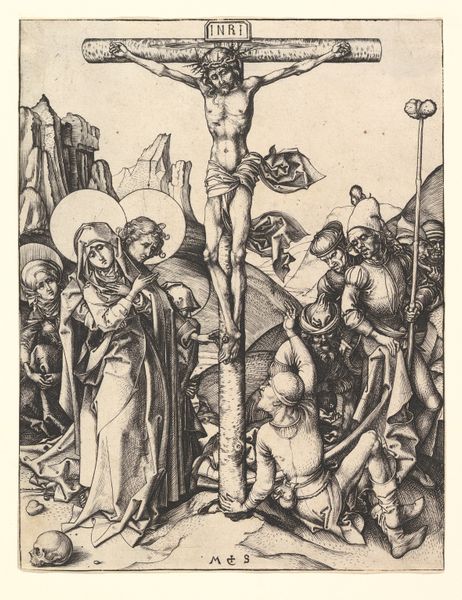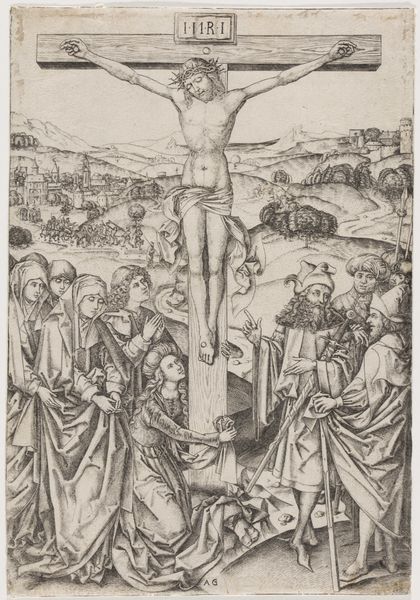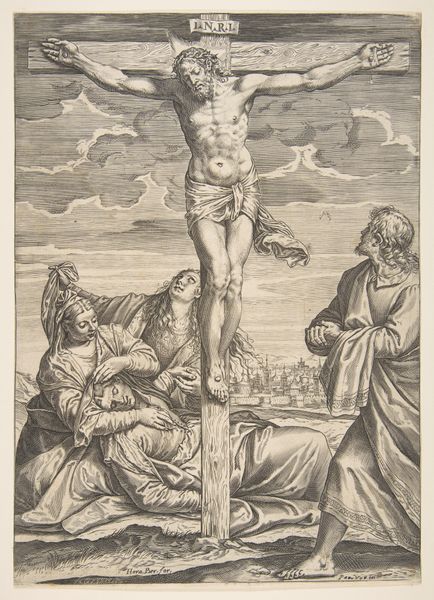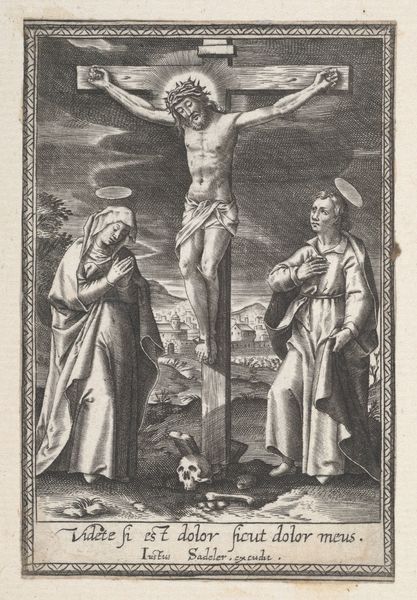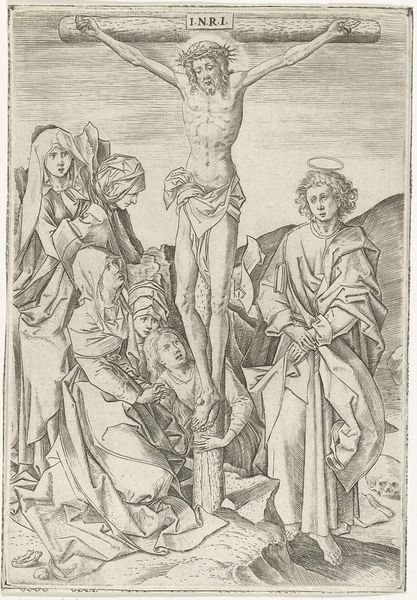
Christ on the Cross with the Virgin and Saint John the Evangelist 1514
0:00
0:00
print, engraving
# print
#
figuration
#
history-painting
#
northern-renaissance
#
engraving
Dimensions: block: 24.9 × 17.8 cm (9 13/16 × 7 in.) sheet: 32.6 × 22.4 cm (12 13/16 × 8 13/16 in.)
Copyright: National Gallery of Art: CC0 1.0
Curator: Alright, let's take a moment with "Christ on the Cross with the Virgin and Saint John the Evangelist," an engraving dating back to 1514 by Wolf Traut, an artist associated with the Northern Renaissance. What strikes you first about this piece? Editor: Oof, immediate feeling? Overwhelming sorrow. The figures are shrouded, their grief palpable, you know? But it's a somber beauty. The precision of the lines is amazing. Almost feels like the sharpness enhances the feeling of pain. Curator: The engraving technique certainly lends itself to conveying that sharpness. Note how Traut employs symbolism; the skull at the base of the cross, for instance, represents Adam, signifying Christ's sacrifice as redemption for original sin. These are standard icons, yes, but see the small apple branch winding around the cross? Editor: Good eye! The fruit is a new touch, an artful little symbol to remind us how all this went down, that bite of forbidden knowledge! And I can almost feel the weight of the hanging body through these very simple lines! Is there any story as to why he includes an image of a town at the center? Curator: While the landscape does seem unusually emphasized, in many images from the era this is typical to see, as it adds a sense of reality and immediacy to the scene, a landscape familiar to viewers. It draws the scene into their world. Editor: Yeah, that totally makes sense. So, in essence, what might seem initially distant and almost alienating becomes strangely present, almost mirroring our own relationship with faith... that dance between skepticism and belief. Traut's making it something felt, and known. And that sharp sorrow begins to be something else altogether. Curator: Exactly, and remember this was the height of the Reformation. Images were powerful tools of communication. Traut would have been trying to capture that emotional experience, but in a way that conformed to tradition. The image needs to reflect ideas held by the patrons and audience, which gives them their weight of recognition. Editor: Huh, food for thought. It's strange to consider how so many images of suffering still command so much aesthetic contemplation even now, after all this time, even for the secular and faithless! Curator: Indeed. Even detached from explicit faith, the echoes of sacrifice, love, and loss are powerful motifs. It goes beyond religious doctrine to something intrinsic to human existence. Editor: You're right. It really brings me back to our beginnings as mortals, and our attempts at some transcendent life beyond death. That kind of reaches beyond history to our moment right here, doesn't it?
Comments
No comments
Be the first to comment and join the conversation on the ultimate creative platform.
